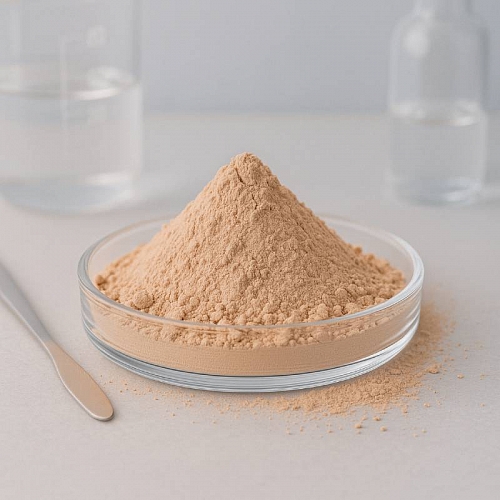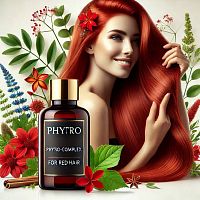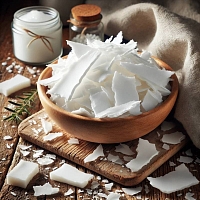-
 Absolutes
Absolutes
-
 Active Complexes
Active Complexes
-
 Actives and Peptides for Cosmetics
Actives and Peptides for Cosmetics
-
 Amino Acids
Amino Acids
-
 Food Flavorings
Food Flavorings
-
 Ayurveda
Ayurveda
-
 Vitamins
Vitamins
-
 Gelling Agents and Thickeners
Gelling Agents and Thickeners
-
 Hydrosols and Floral Waters
Hydrosols and Floral Waters
-
 Hydrolyzed Proteins
Hydrolyzed Proteins
-
 Fragrant and aromatic substances
Fragrant and aromatic substances
-
 Acids, Salts, Alcohols, and Alkalis
Acids, Salts, Alcohols, and Alkalis
-
 Preservatives and Antioxidants
Preservatives and Antioxidants
-
 Cosmetic Raw Materials
Cosmetic Raw Materials
-
 Dyes, Pearlescents, and Glitters
Dyes, Pearlescents, and Glitters
-
 Face Masks, Scrubs, and Dried Flowers
Face Masks, Scrubs, and Dried Flowers
-
 Oils, batters, macerates, oil mixtures
Oils, batters, macerates, oil mixtures
-
 Candle Supplies
Candle Supplies
-
 Melt and Pour Soap Bases
Melt and Pour Soap Bases
-
 Base for cosmetics, cream, serum, shampoo
Base for cosmetics, cream, serum, shampoo
-
 Fragrance Oils
Fragrance Oils
-
 Surfactants
Surfactants
-
 Peelings for Skin
Peelings for Skin
-
 Herbal Powders and Plant
Herbal Powders and Plant
-
 Silicones and Conditioning Surfactants for Hair
Silicones and Conditioning Surfactants for Hair
-
 Raw materials for dietary supplements
Raw materials for dietary supplements
-
 Packaging for Cosmetics and Perfumes
Packaging for Cosmetics and Perfumes
-
 Molds, Packaging, Tools
Molds, Packaging, Tools
-
 Organic Extracts
Organic Extracts
-
 Emollients for Cosmetics
Emollients for Cosmetics
-
 Emulsifiers
Emulsifiers
-
 Essential Oils
Essential Oils
Neutral Skin Tone Pigment for Foundation - Achieve Perfect Color Matching
Unlock unparalleled precision in your foundation formulations with our premium Neutral Skin Tone Pigment. This meticulously crafted pigment is specifically designed to seamlessly integrate into a wide range of cosmetic bases, allowing you to create custom shades of foundation, concealers, and other complexion products that perfectly match individual skin tones. Our neutral base ensures optimal compatibility and blendability, providing a natural, flawless finish every time.
Applications and Areas of Use in Cosmetics:
Our Neutral Skin Tone Pigment is an indispensable component for formulators seeking ultimate control over color in various complexion-enhancing cosmetics:
- Foundation Manufacturing: The primary application lies in the creation of liquid, cream, stick, and powder foundations. This pigment serves as a fundamental building block, allowing for the development of a diverse shade range from very light to deep, with precise undertone adjustments.
- Concealer Production: Achieve targeted coverage with concealers formulated using this neutral pigment base. It enables the creation of shades that effectively neutralize imperfections while seamlessly blending with the surrounding skin.
- BB and CC Cream Formulation: Integrate this pigment into BB (Beauty Balm) and CC (Color Correcting) creams to provide buildable coverage and even out skin tone, offering a natural-looking alternative to traditional foundation.
- Tinted Moisturizers: Add a subtle hint of color and evenness to moisturizers by incorporating this neutral pigment, creating lightweight formulas that hydrate and enhance the complexion.
- Color Correctors: While the base is neutral, it can be combined with other color pigments (yellow, red, blue, green) to create specific color-correcting shades designed to neutralize redness, sallowness, dark circles, and other discoloration concerns.
- Custom Blending Stations: Ideal for in-store or professional makeup blending stations where makeup artists can create personalized foundation and concealer shades for individual clients on demand.
- DIY Cosmetic Formulations: Empowers individuals to create their own custom-blended foundation and concealer at home, ensuring a perfect match.
- Setting Powders (Tinted): Incorporate finely milled versions of this pigment into loose or pressed setting powders to add a touch of color and enhance coverage.
- Primers with Color: Integrate for primers that not only smooth the skin's surface but also offer a subtle evening of skin tone.
Key Benefits for Cosmetic Formulations:
- Ultimate Shade Versatility: Provides a neutral base that can be adjusted with other pigments to create an extensive range of skin tones and undertones (warm, cool, olive).
- Excellent Blendability: Formulated for smooth and seamless integration into various cosmetic bases, ensuring a natural, streak-free finish.
- Precise Color Control: Allows formulators to achieve highly accurate and reproducible shades.
- Optimized Compatibility: Designed to work well with common cosmetic ingredients and formulations.
- High Pigment Load Capability: Enables the creation of both sheer and full-coverage products.
- Stable and Consistent Color: Ensures the final product maintains its intended shade over time.
- Enhances Product Performance: Contributes to the overall look, feel, and wear of foundation and concealer products.
- Suitable for Various Skin Types: The neutral base is generally well-tolerated by different skin types.
- Global Reach: Our online store offers worldwide shipping, making this essential pigment accessible globally.
Cosmetic Recipe: "Perfect Match" Liquid Foundation
| Ingredient | Percentage (%) |
|---|---|
| Deionized Water | 60.0 |
| Glycerin | 5.0 |
| Emulsifying Wax (e.g., Cetearyl Alcohol & Cetearyl Glucoside) | 5.0 |
| Caprylic/Capric Triglyceride | 10.0 |
| Jojoba Oil | 3.0 |
| Neutral Skin Tone Pigment for Foundation | Varies (Adjust to desired shade intensity) |
| Iron Oxides (Yellow, Red, Black) | Varies (For undertone adjustment) |
| Titanium Dioxide (Optional, for opacity/coverage) | Varies (Adjust to desired coverage) |
| Preservative (e.g., Phenoxyethanol, Ethylhexylglycerin) | 1.0 |
| Vitamin E (Tocopherol) | 0.5 |
Instructions:
- In a heat-resistant beaker, combine the deionized water and glycerin. Heat to 75°C (167°F).
- In a separate heat-resistant beaker, combine the emulsifying wax, caprylic/capric triglyceride, and jojoba oil. Heat to 75°C (167°F), stirring until the wax is completely melted.
- Slowly pour the oil phase into the water phase while continuously mixing with a stick blender or high-shear mixer. Mix for several minutes until a smooth emulsion forms.
- Remove from heat and continue stirring gently as the emulsion cools.
- In a separate container, pre-disperse the Neutral Skin Tone Pigment, iron oxides, and titanium dioxide (if using) in a small amount of the oil phase (from step 2) or glycerin to ensure even color distribution and prevent clumping. Use a mortar and pestle or a small mixer for thorough dispersion.
- Once the emulsion has cooled below 40°C (104°F), slowly add the pre-dispersed pigment mixture to the emulsion while continuously mixing. Continue mixing until the color is uniform throughout the batch.
- Add the preservative and vitamin E, mixing gently to incorporate.
- Adjust the pH of the formulation if necessary.
- Transfer the finished foundation to clean packaging.
Application Recommendations:
- The percentage of Neutral Skin Tone Pigment used will vary significantly depending on the desired shade intensity and coverage level. Start with a small percentage and gradually increase until the target shade is achieved.
- For precise color matching, it is crucial to use accurate weighing scales and to keep detailed records of the pigment percentages used for each shade.
- Thoroughly disperse the pigment to avoid streaking or uneven color distribution in the final product. Pre-dispersion in a liquid vehicle is highly recommended.
- When adjusting undertones, use iron oxides sparingly and gradually to avoid overpowering the neutral base.
- Titanium dioxide can be added for increased opacity and coverage, but its usage should be carefully controlled to avoid a chalky appearance, especially in deeper skin tones.
- The final shade of the foundation will be influenced by the other ingredients in the formulation, so it's essential to test and adjust accordingly.
- Consider using a colorimeter or spectrophotometer for objective color measurement and matching during the formulation process.
- Ensure the compatibility of the pigment with all other ingredients in the formula and conduct stability testing to ensure the final product remains consistent over time.
| INCI | Mica, Titanium Dioxide, Iron Oxides, Hydrogen Dimethicone, Aluminum Hydroxide, Silica | |
| Other | ||
| Application | Cosmetics: foundation creams, powders, concealers, makeup bases Sunscreens: creams and fluids with color Medical cosmetics: dermatological products with a tinting effect Creams for men: mattifying and camouflage fluids Professional makeup and HD makeup | |
| Att brand | Japan | |
| Color product | Neutral nude, no pronounced pink or yellow undertones | |
| Features | All information presented on the site is for reference only | |
| Inci | Mica (and) Titanium Dioxide | |
| Name | Neutral flesh pigment for foundation creams, 10 g | |
| Other names | Neutral Skin Tone Pigment, Pigment Beige, Neutral Foundation Base, Natural Nude Pigment, Nude tone pigment | |
| Packaging | container for transportation | |
| Packing | 10 g | |
| Properties | Gives the skin a natural and even tone Provides camouflage of imperfections Improves optical correction Mattes Resistant to light Has a soft focus effect Resistant to sweat and sebum Easy to disperse Safe for the skin | |
| Purpose | Used in decorative cosmetics to create foundations, BB and CC creams, correctors, compact and loose powders, as well as in sunscreen cosmetics and tinted creams with SPF. | |
| Solubility | Insoluble in water and oil, dispersible in fatty phase and silicone oils | |
| View | Fine dry powder, light beige, matte | |
| Valid until | не ограничен | |










 Add to cart
Add to cart Buy in 1 click
Buy in 1 click

 Add a review
Add a review To favorites
To favorites To compare
To compare















